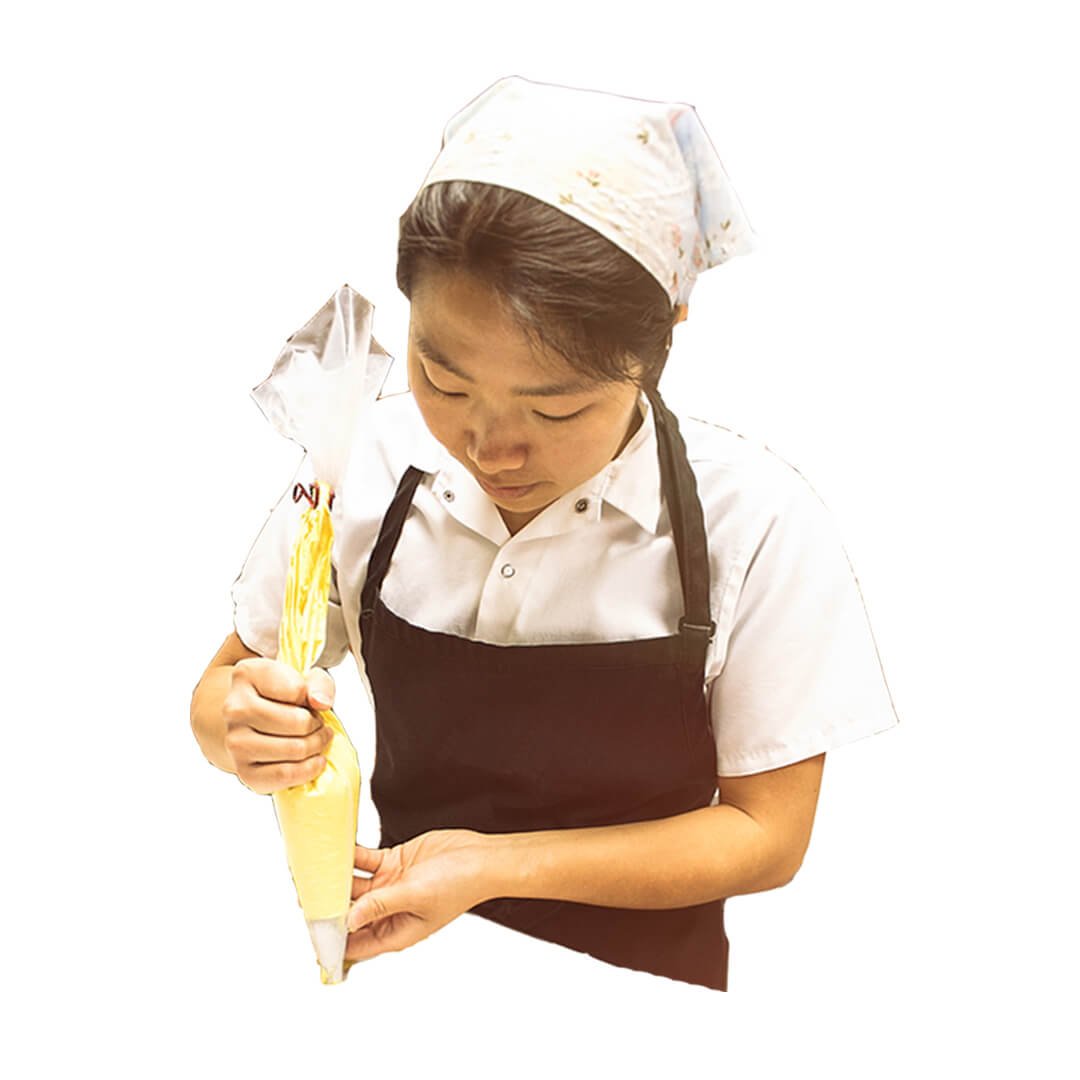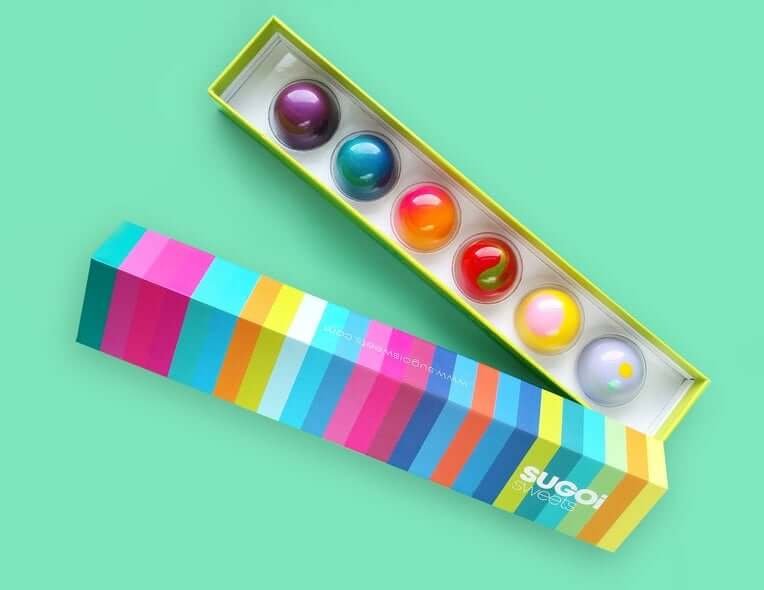Sugoi Sweets Wows with Bold Colored Bonbons & Layers of Flavor
Elle Lei photo courtesy of Sugoi Sweets
Chocolatier Elle Lei, co-owner of Sugoi Sweets, is part artist and part craftsman. A Chinese immigrant who once lived in Japan, Lei worked in kitchens in Louisville and Chicago (a macaron shop, a French restaurant, a Mexican restaurant where everything was cooked on a wood fire) before she started making chocolates out of a commercial kitchen in Naperville. She paints her bonbon collections by hand, with bright, modern colors and fills them with bright, modern flavors, many influenced by her travels. Sugoi is an exclamation that means “wow” in Japanese and is the perfect description of her confections.
Inspired by Travel
Says Lei, “I only make whatever excites me--you need color balance, flavor balance, and texture balance. I balance rich dark flavors like coffee and caramel with something light and citrusy” like fruits or berry flavors. “And when it comes to texture you can’t just do ganache. You have to have different textures and mouthfeel. Too much of one thing is just boring.”
The bonbons arrive in a persimmon hued jewel box in flavors that range from Asian inspired such as hojicha rice puff, strawberry umeshu to childhood fun including peanut butter and jelly and cotton candy pop rock, side by side with elegant classics. That speckled grass green one? That’s got minty hot chocolate ganache and a dollop of marshmallow inside. That shiny black one? It’s café con leche –dark coffee filling with a layer of “milk” on top.
Making Bonbons
The process for making these gorgeous confections is complex. Lei first cleans and polishes the molds--“if you wanna make shiny bonbons… it has to be squeaky clean.” For the designs, she tempers and colors cocoa butter, and individually paints the designs in the molds using a paint brush, sponge, or cotton swab. After applying the layer of color, she shells the bonbons by pouring tempered chocolate in and then dumping it out. Next, she adds the fillings, in one, two, or three layers—ganache, marshmallow, caramel, pate de fruit, praline-- then seals with another thin layer of tempered chocolate. They set for 24 hours, get sealed with another layer of chocolate, then she taps them out of the molds.
Sugoi Sweets complete collection photo credit Sugoi Sweets
Chocolate Sources
Lei’s choice of chocolate is as important as her process. “As a chocolatier, consistency and quality is the number one priority. I have to choose a brand that offers a product…that tastes the same, and the workability is the same every time, otherwise there are just too many variables.” While she keeps 5-6 SKU’s on hand from Valrhona, Cacao Barry, and the Latin American single origins from República del Cacao, her white chocolate of choice is the Valrhona Opalys 35%. The República del Cacao Ecuador dark chocolate 65% is her “workhorse” for bonbons. “It has like a red wine flavor, deep and aromatic, and I love that little fermented note, that fruity tingle.”
Experimenting with Bean-to-Bar
In the summer of 2020 Lei and her husband Jason bought their own roaster and melanger—a small mill that grinds cocoa nibs into chocolate liquor-- to experiment with making micro-batches of their own bean to bar chocolate. “We loved the flavor,” says Lei, “but it is very difficult to control the consistency.” They made bars from Belizean beans and milk chocolate with alternative milks like oat, goat, and coconut with great results, but the number of variables the process introduced just wasn’t suited to the precision needed for making their bonbons and confections. In the future, they plan to make small batch tasting bars to show off the terroir of the beans from different cacao producing regions. Until then, order the bonbons and their other amazing confections or follow her on Instagram @sugoi_sweets.




